
Source: Wikipedia
“Ceci n’est pas une pipe.” This is not a pipe. But wait, it certainly looks like a pipe. What is going on here?
I can clearly remember seeing this picture for the first time as a kid, and not understanding the point. What else could it be other than a pipe? However, if we take a closer look, we realise that, indeed, this is absolutely not a pipe: it is in fact a painting; a representation of a pipe; oil paint put on a white canvas and placed in a wooden frame. When that canvas is signed with the name René Magritte and exhibited in the Los Angeles County Museum of Art, it becomes a masterpiece worth millions of dollars.
What Magritte’s artwork is communicating is the famous problem of reality and its representation. As philosopher Alfred Korzybski put it: “the map is not the territory”. Just as a map is not equivalent to the territory it depicts, so with René Magritte’s artwork, the painting of the pipe is not itself a pipe Yet, if anyone were to ask us what we see when faced with Magritte’s painting, we would most certainly answer, without any hesitation: a pipe.
“The famous pipe. How people reproached me for it! And yet, could you stuff my pipe? No, it’s just a representation, is it not? So if I had written on my picture “This is a pipe”, I’d have been lying!”—René Magritte
Mental Models and Frames
There is a growing body of research that demonstrates the gulf that exists between objective reality and the way that human beings perceive that reality. The way our brains process information is determined by the mental structures we use to interpret that information and the context within which it is perceived. Simply put, we think using mental models. Reality is messy, overwhelming and infinitely complex. It is just not possible for us to fully perceive or comprehend the enormous complexity of the world around (and inside) us. Instead, we focus on particular details that we find especially important and ignore the rest. We try to understand the underlying structure of every situation by simplifying and modelling it in our heads, and we build different representations and simulations in our minds. These, like many little maps, help us to make sense of the infinitely complex world.
However, there is a caveat here. By using models and maps to navigate and understand the situations we find ourselves in, we don’t see reality as it actually is. Rather, we see the world as it seems to be, is most likely to be or ought to be. Every one of us observes reality through our own lenses. These “cognitive frames” are the accumulation of our assumptions, values and beliefs. These mental structures are so robust that we cannot ignore them, no matter how hard we might try. We are constantly labelling and categorising everything we encounter, even when we are unaware of doing so. In that sense, we are pretty similar to the deep-sea fish, living well below sea level, not being aware that water actually exists. Or, as my old history teacher used to say: “In a blue world, we are incapable of grasping the notion of blueness.”
Mental Models Trump Material Reality
Frames are more powerful than information. “The Truth will set you free”, runs the old Scriptural adage, but cognitive science has shown that the ‘truth’ that people perceive is always that which is filtered through their own pre-existing cognitive lenses. In practice, faced with information that contradicts our assumptions, values and beliefs, we are far more likely to label it as irrelevant or stupid, and we tend to dismiss it altogether.
This is also true in the world of innovation. It is important to be cautious about introducing any new idea that contradicts people’s assumptions, values or beliefs. Frames cannot be changed overnight. It takes a considerable amount of time and effort, sometimes years of repeated reinforcement, for new mental structures to develop.
Therefore, it is wise to start with what people already value, believe and expect when introducing anything that is radically new. Sometimes even the most radical innovations can be made to look like minor variations of existing solutions when they first emerge. For example, the earliest automobiles appeared quite similar to the kinds of carriages already in use at the time when they were introduced.
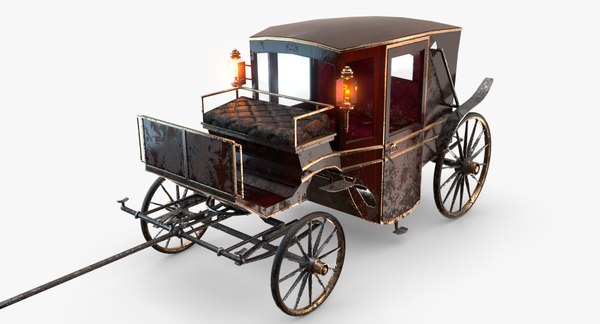
Source: turbosquid.com

Source: Wikimedia
Similarly, the earliest websites looked very similar to printed media, and people used them for similar purposes.
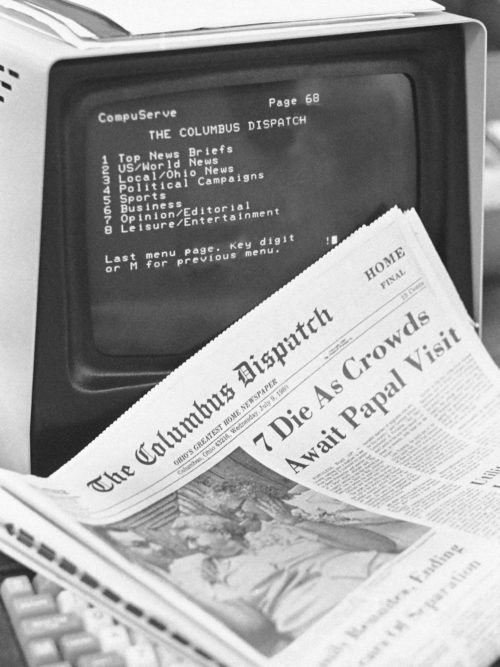
Source: media.npr.org
Widespread adoption of radically new frames take a long time to develop. Once that happens, however, they can have profoundly transformative effects.
Why is this the case?
We develop our cognitive frames in order to help us better navigate the world. By default, they bring order and predictability to our lives. By definition, they are meant not to change and to preserve the status quo. Therefore, the change in mindset required for radical innovation can be a really hard thing to achieve. Introducing something radically new can be very counterintuitive. It literally goes against our natural mental processes, since these aim to preserve the status quo whenever possible.
As cognitive scientist George Lakoff argues, “The frames are in the synapses of our brains, physically present in the form of neural circuitry. When the facts don’t fit the frames, the frames are kept and the facts ignored.” When we encounter any new piece of information, we try to fit it into our existing mental structures. When we think about something, we activate those frames in our brains in the form of neural synapses. To turn these mechanisms off can be especially hard, if not impossible. We use these frames even when we actively try to avoid using them. We evoke a frame even when we try to negate it. Even presidents fall victim to this phenomenon. If someone says “I’m not a crook”, what will be the very first association that pops into people’s minds? Crook, of course. This is something that happens unconsciously and automatically. Once we have heard the word “crook”, it becomes almost impossible to think about anything other than a crook.
Pepsi learned this the hard way. After decades of market dominance by Coca-Cola, in the early 1980s, Pepsi launched a massive advertising campaign called the Pepsi Challenge. Pepsi claimed that they had created a better tasting product than Coke. They started their own in-house blind taste experiments, and they found that people actually liked the taste of Pepsi more than the taste of Coke. Pepsi got pretty excited about these findings. They went into malls and shopping centres around the US and invited people to take part in their blind taste experiments as a part of an enormous PR campaign. Yet Pepsi failed to gain market dominance; its market share actually declined over the subsequent decades.
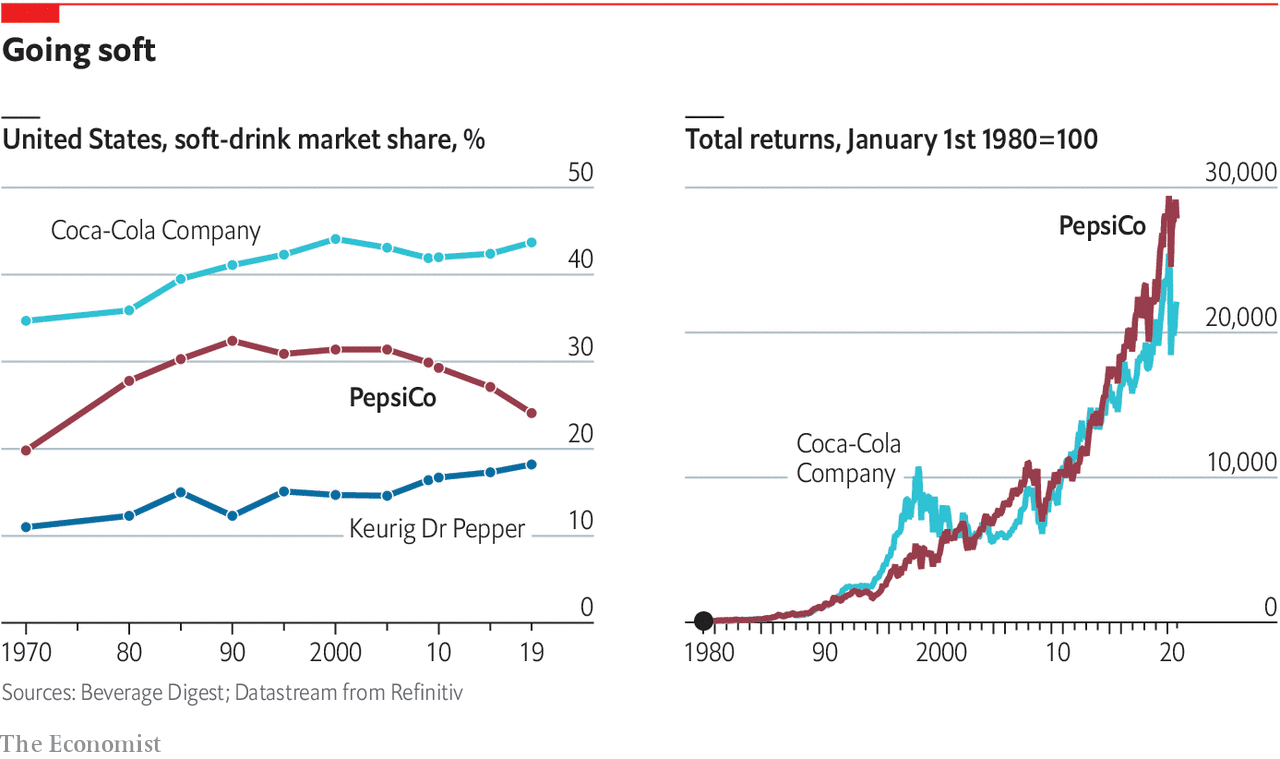
What’s wrong with Pepsi’s message?
It is negating a well-established frame. If you claim that your product has a better taste and Coke is no longer the best soft drink on the market, you go against millions of people’s well-established beliefs. Coca Cola has spent millions of dollars over decades carefully creating a picture in customers’ minds that it is the best soft drink on the market. These rock-solid beliefs cannot be changed overnight. If you say that something is no longer the best, you end up reinforcing people’s perception that it is, in fact, the best. Remember, when you negate a frame, you evoke the very same frame.
If soft beverages were sold in generic bottles without any label, Pepsi could perhaps beat Coke in the long run. But in reality, people never actually buy any drink blindly. When we buy a drink, we also purchase a piece of the brand, with all the messages and promises that go along with that brand.
Neuroscientists also became interested in this phenomenon. They conducted blind-taste experiments inside an fMRI (Functional Magnetic Resonance Imaging) machine. They concluded that brand perception plays a significant role in how we think about and how much we value a particular product. Here are their key findings:
“Two conditions were examined: (1) anonymous delivery of Coke and Pepsi and (2) brand-cued delivery of Coke and Pepsi. For the anonymous task, we report a consistent neural response in the ventromedial prefrontal cortex that correlated with subjects’ behavioral preferences for these beverages. In the brand-cued experiment, brand knowledge for one of the drinks had a dramatic influence on expressed behavioral preferences and on the measured brain responses.”

Source: McClure, Samuel M., et al. “Neural correlates of behavioral preference for culturally familiar drinks.” Neuron 44.2 (2004): 379-387.
When we ignore fundamental principles guiding how customers think, we put ourselves in an unfortunate situation. In 1985, Coca-Cola fell into the same trap of going against customers’ values and expectations when they developed their “New Coke”. This became an instant failure. Despite the New Coke tasting better “on paper”, people hated it. They even organised protests calling for the old Coke to be brought back. Coca-Cola reintroduced their old recipe as “Coca-Cola Classic” within three months.

Source: history.com

Source: Twitter
These well-intended advertising strategies violated fundamental principles that govern how the brain works. Changing a product millions love is a risky business. But doing so literally overnight without gathering real-world feedback from loyal customers spells disaster. As we have seen, frames are very hard to develop. But once they are in place, it takes tremendous effort to replace them. If we try to change well-established beliefs all at once, we will most likely face insurmountable resistance. People will feel an irresistible urge to preserve the status quo, even when a clearly superior solution exists. Effective innovators try to harness these natural forces rather than fight them.
Meaning is Determined by Context, not Content
When describing the world, we humans constantly think in analogies that manifest themselves as metaphors and narratives. We learn best by telling stories to ourselves and others. These help us to better understand the situations we find ourselves in and enable us to intuitively understand analogical relationships between different things. We can immediately grasp the concept of representing a thing with something else. This kind of reasoning is a general human quality. It comes naturally to us. Even playing children use abstractions all the time, for example, when one says to another: “Let’s pretend I’m a princess, and you can be a firefighter.”
Metaphors, narratives and stories help us discover similar patterns in the world and identify the underlying structure of different phenomena. These mental shortcuts help us make sense of the infinite complexity surrounding us. This way, we can make decisions much faster and sometimes more accurately. The alternative would be to be constantly analysing an overwhelming amount of data, even when making minor, routine decisions.
The brain is a pattern-recognising machine. Faced with mountains of raw information on a daily basis, the brain has learned how to instantaneously and automatically label and categorise everything we see, hear, taste, smell, touch and feel. When in a new situation, we can instantly recognise familiar patterns based on our previous experiences (or even based on inherited “information”). During everyday life, we use these mental shortcuts very effectively. Our brain immediately filters out all the information that we consider irrelevant and focuses on what is deemed most important. Using these shortcuts allows us to quickly analyse complex situations, even in cases where the available information is limited.
How are we doing this?
Once it has recognised a pattern, the brain is able to complete the “missing parts” of the pattern by filling in the gaps. We interpret every piece of information relative to its context. Our perception of a particular object, phenomenon, situation or even person might be entirely different if encountered in a different context.
What is the mechanism behind this curious phenomenon?
As Harvard psychologist Daniel Gilbert has pointed out, our memory plays tricks on us all the time, perhaps even now as you read these lines. On a typical day, we encounter an enormous amount of information. Researchers estimate that the brain can process up to 20 trillion impulses every second. That is 20,000,000,000,000,000 bits of information every single second. Yet, still, we seem able to remember most of what happened to us, and we can retrieve our memories very precisely when we need them, even after decades. And yet our brain doesn’t seem to overflow. Indeed, quite the opposite seems to occur. The more we learn, the stronger our memory becomes. The question is: how is it that we are able to perform these miraculous feats of memory?
Daniel Gilbert argues that when we think about specific memories, we cannot accurately recall all the details in their entirety. In other words, we don’t remember everything we seem to remember. In fact, we recall just the “basics” and our brain fills out the rest. We preserve just a few significant threads of each experience. Based on these fundamentals, our brain constructs the rest of the story by filling in all the blank details and making the picture seem complete. And still, the brain does it with such perfection that we believe that all the details were in our minds the entire time.
Neuroscientist David Eagleman summarizes this phenomenon using an interesting metaphor. He writes the following: “Consider the activity that characterizes a nation at any moment. Factories churn, telecommunication lines buzz with activity, businesses ship products. People eat constantly. Sewer lines direct waste. All across the great stretches of land, police chase criminals. Handshakes secure deals. Lovers rendezvous. Secretaries field calls, teachers profess, athletes compete, doctors operate, bus drivers navigate. You may wish to know what’s happening at any moment in your great nation, but you can’t possibly take in all the information at once. Nor would it be useful, even if you could. You want a summary. So you pick up a newspaper—not a dense paper like the New York Times but lighter fare such as USA Today. You won’t be surprised that none of the details of the activity are listed in the paper; after all, you want to know the bottom line.”
This pattern-recognising mechanism also plays tricks on our perception of things in the present. This means that the very same experience can be interpreted very differently based on how we fill in those crucial gaps. In other words, when the same information is perceived in different contexts, it can have very different meanings.
Consider the following two examples to illustrate this point. What do you see in the picture? Looking at the same image, some of us see a vase, while others see the profiles of two faces. Rubin’s vase illusion demonstrates that it is not a picture’s subject that determines its meaning but instead the context in which it is interpreted.

Source: Ittelson, W. H. (1969). Visual Space Perception, Springer Publishing Company, LOCCCN 60-15818
Let’s consider another example.
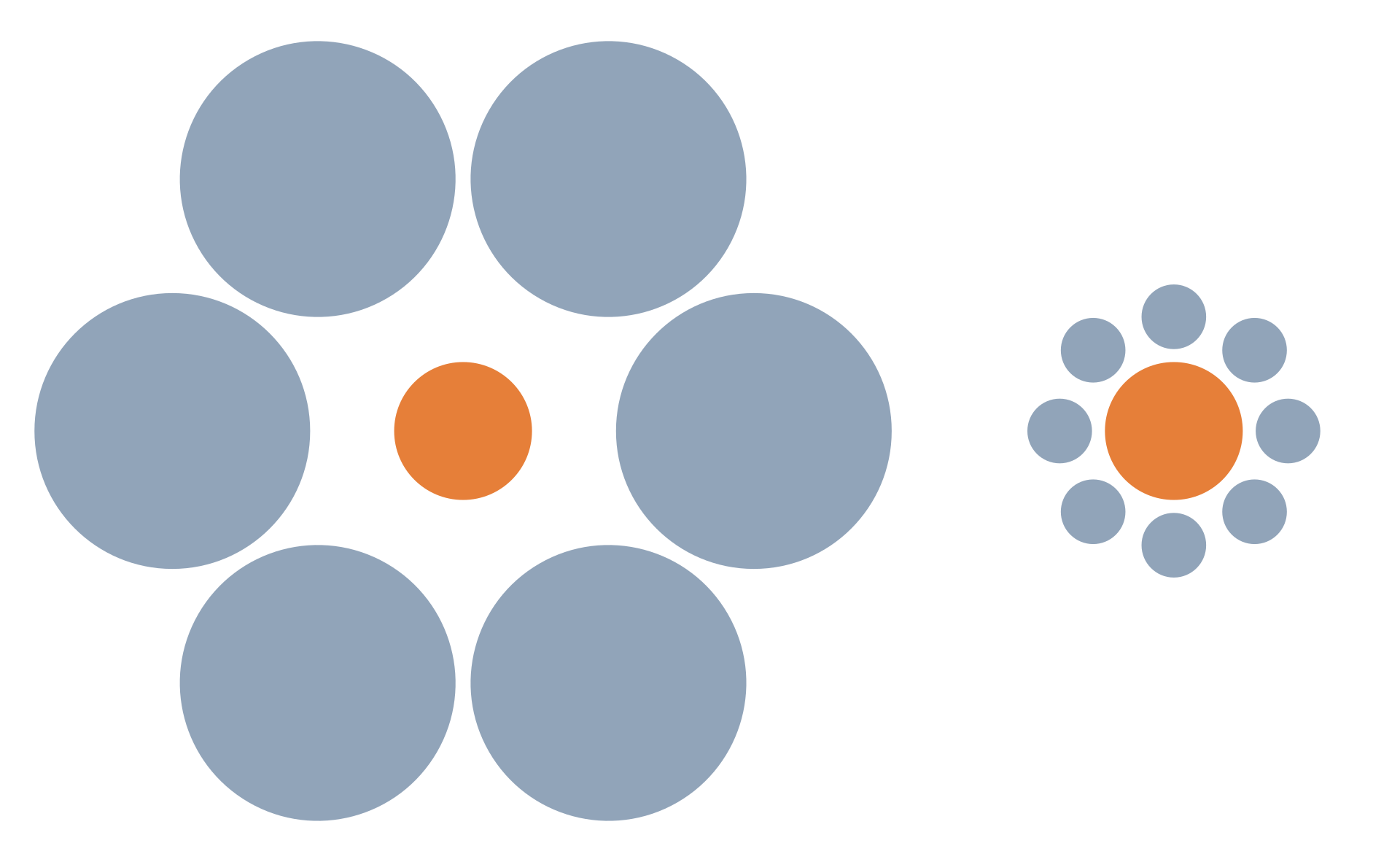
Source: Roberts B, Harris MG, Yates TA (2005). “The roles of inducer size and distance in the Ebbinghaus illusion (Titchener circles)”. Perception. 34 (7): 847–56. doi:10.1068/p5273. PMID 16124270.
This is the famous Ebbinghaus Illusion (AKA Titchener circles). The two central circles are identical when placed next to each other. Yet they look very different when placed in a different context.
Our brain creates perceptions by comparing objects to their environment rather than offering an unfiltered view onto reality as it actually is. This is true not just in the case of abstract concepts but also for concrete and measurable things. There is an interesting experiment that you can try even in your kitchen. Get three pots. Put hot water in the left one, cold water in the right one and lukewarm water in the middle one. Then put your right hand into the right pot and your left hand into the left pot. Wait a few minutes, and then put both of your hands into the middle pot, the one containing lukewarm water. You will experience something quite unusual. You will feel the same water hot with one of your hands and cold with the other. You experience a similar phenomenon when entering your house from the garden on a bright summer afternoon. Initially, you will probably find the room very dark inside, and you may struggle to see clearly. As time passes, however, your eyes will accommodate to the limited brightness. Soon the same room will feel completely normal, and you will be able to see things as sharply as before.
Here is another example. Researcher Chia-Jung Tsay from University College London compared the manner in which three groups of people made predictions about who they thought would win a classical music competition. The first group listened to audio only without video. The second group watched a recording of the competition with both video and audio. Finally, the third group watched a recording with video only.
Here are Tsay’s findings. “96.3% of domain-expert participants reported that the sound mattered more for their evaluations.” However, “only 20.5% of experts identified the winners when they heard sound-only versions of the recordings.” Those participants who viewed just the video, without hearing the audio, performed around twice as well in predicting the actual winner. Chia-Jung Tsay summarises her findings in this way: “People consistently report that sound is the most important source of information in evaluating performance in music. However, the findings demonstrate that people actually depend primarily on visual information when making judgments about music performance.”
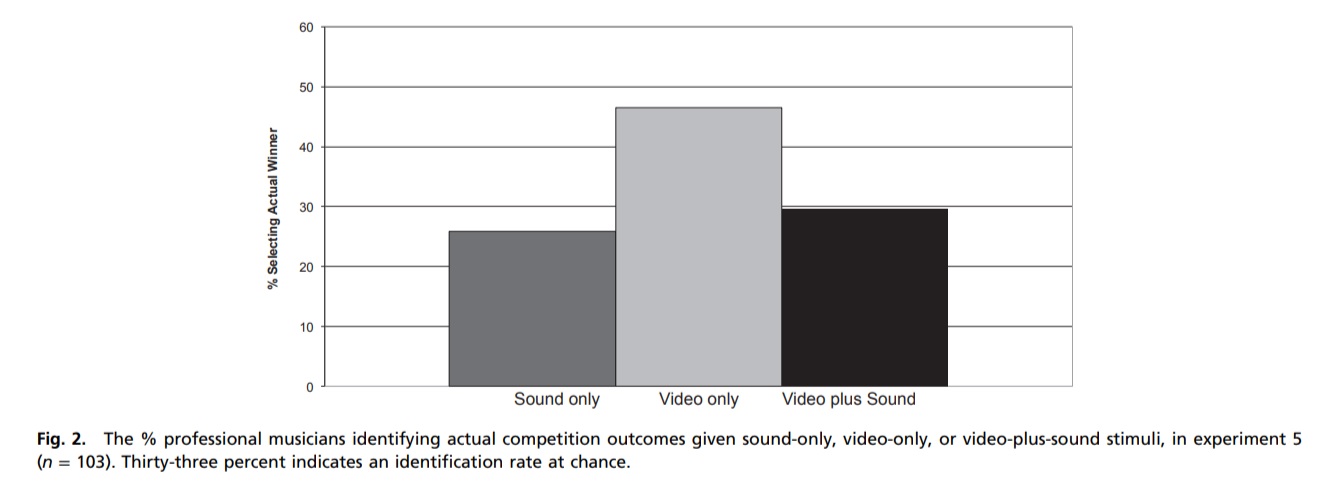
Source: Tsay, Chia-Jung. “Sight over sound in the judgment of music performance.” Proceedings of the National Academy of Sciences 110.36 (2013): 14580-14585.
Have you ever wondered why we pay ten or even a hundred times more for an exclusive bottle of wine? The California State Fair Wine Competition is one of the most prestigious wine competitions in North America. From the outside, the whole process looks seriously scientific. Judges follow the long-held tradition of evaluating each wine based on its sweetness, acidity, tannins, fruit and body. However, if we dig a little deeper, we find that the results of this sort of evaluation are surprisingly inconsistent.
Robert Hodgson, a former judge and member of the advisory board, became intrigued by these inconsistencies. At the 2005 competition, he decided to run the process under the conditions of a scientific experiment. Wines were served to judges in a random order, such that they might also taste the same wine multiple times. In analysing the results, judges were shown to have been consistent in their evaluations only 18 percent of the time. It has also been observed that 7 percent of the time, the very same wine, when served at different wine competitions, receives both the highest possible score and the lowest possible score.
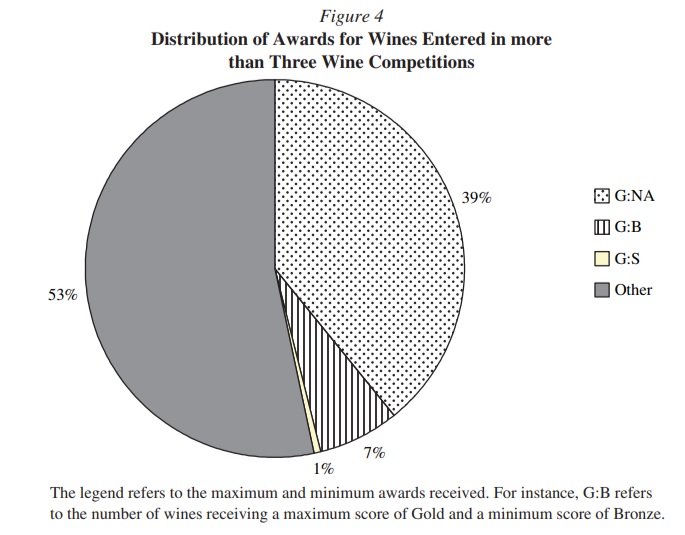
An Analysis of the Concordance Among 13 Wine Competitions,” Journal of Wine Economics 4, no. 1 (2009): 1–9.
We don’t perceive reality in an absolute way but rather relatively. We can accommodate to different circumstances very well. However, we notice even the slightest changes around us. In other words, experience is relative, and the measure that determines its significance is change. A hungry beggar on a cold winter’s evening would certainly appreciate a super-sized hamburger more than the chef of a French Michelin-star restaurant on the same evening. A man parched with thirst after a trip through the Sahara Desert values a glass of water more than someone who has just emerged from a swimming pool. We appreciate the same hamburger and the same glass of water differently depending on their potential to improve our current state. Economists might call this “declining marginal utility”. In other words, the more we have, the less value we can get from having more.
More than 200 years of economic theory rests on the notion that the market depends on informed consumers making rational judgements. Well, it can be pretty hard to make rational judgements if we aren’t capable of objectively assessing our experiences.
Creating New Meaning by Switching Context
We have seen so far that context is a primary determinant in our interpretations of the reality around us. The question is: can we change our perception of things simply by changing their environment? Furthermore, can we create entirely new meanings by changing the context in which things appear?
This is not just possible, but very frequent; applied by many, but recognised by few. Think about ambiguous words. For example, the word “break” has 75 different meanings, the term “cut” has 70, the word “run” has 57, and the word “play” has 52. The same word can carry very different connotations depending on the context in which it is used. For example, the word ‘break’ in the phrase “I finally got a break away from my jerk boss” is being used very differently from when your partner says, “I need a little break…”.
Changing the meaning of something using context can also have very concrete and tangible implications for innovation and product development, essentially enabling the creation of value out of nothing.
Let’s consider a few concrete examples. Would you be willing to pay for something available for free in almost unlimited quantity? If you are like the majority of people, you certainly would. Statistics from Beverage Marketing Corp show that in 2020, more than $20 billion was spent on bottled water in the United States alone. Most of us have access to tap water in our kitchens, and in most cases, its quality is identical to that of the bottled water we buy in stores. Sometimes, it even comes from the same source.

But why is it that we spend billions on something that is available for free? Convenience certainly plays a part. Digging a little deeper into the data shows us that most bottled water is sold in single-serve plastic bottles. “If we take into account the fact that almost two thirds of all bottled water sales are single 16.9-ounce (500 mL) bottles, though, this cost is much, much higher: about $7.50 per gallon”—according to the American Water Works Association— “That’s almost twice the cost of a gallon of regular gasoline.”
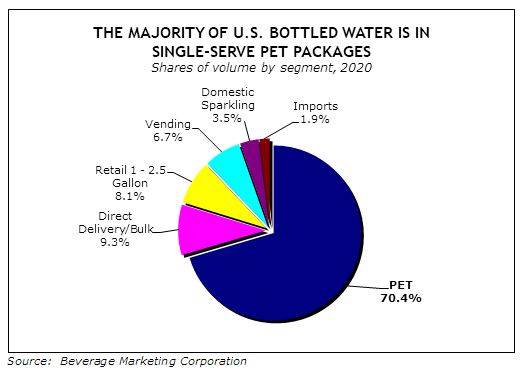
This is a classic case of creating value by changing context. Starting with a free and readily available product, the solution is reframed so as to create greater value for customers. As marketing expert Lee B. Salz puts it, “People are willing to spend more money for what they perceive to be meaningful value.” By changing the context of a product and reframing current solutions—in this case, the packaging, distribution, design and availability—we can create new experiences out of the same “ingredients”. Bottled water is not “just” water. It is bottled water. It is an entirely different product (even if it contains the very same water that is available for free).
For example, when we buy a bottle of Acqua di Cristallo Tributo a Modigliani, which costs about $60,000 per 750ml, we are not doing so simply to quench our thirst. The product carries greater meaning than regular bottled water: it invokes status, a sense of exclusivity, a superior sophistication.
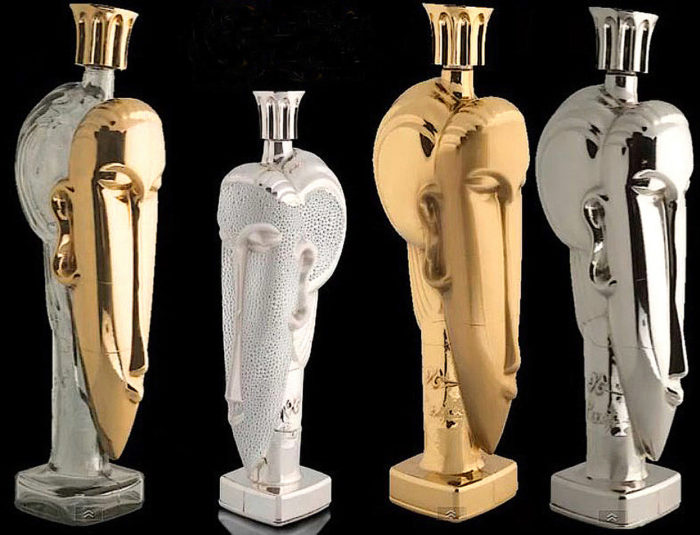
Source: moneyinc.com
How about a lobster for lunch?
Lobster is considered one of the most luxurious gourmet dishes. Few realise, however, that lobster has undergone a similar transformation in popular perception to that which changes regular tap water into high-status bottled water.
Author David Foster Wallace writes: “(…) lobster was literally low-class food, eaten only by the poor and institutionalized. Even in the harsh penal environment of early America, some colonies had laws against feeding lobsters to inmates more than once a week because it was thought to be cruel and unusual, like making people eat rats. One reason for their low status was how plentiful lobsters were in old New England. “Unbelievable abundance” is how one source describes the situation.”
Do you like classical music? What would be your reaction if one of the world’s foremost concert violinists were to stand right in front of you playing a beautiful piece of music? Well, it turns out that if you are like most people, chances are you would completely ignore him and go about your business.
Joshua Bell is a Grammy Award-winning violinist who, even as a child, was considered a prodigy. He has recorded more than 40 albums and has played in the greatest auditoriums around the world. In 2007, he decided to conduct an experiment at a Washington metro station. He put a baseball cap on his head, placed his violin case on the ground in front of him and played items from a recently-recorded album. Out of 1,097 people who passed by, only 7 actually stopped to listen to him. With this world-class performance he earned a total of $52.17. Most people didn’t even bother to listen for longer than a couple of seconds. Yet, if the same artist with the same instrument plays the same pieces in a different environment, we are willing to pay hundreds of dollars for a single ticket, and we would be delighted to listen to his music.
When we appreciate a masterpiece performed by a world-class artist, do we really appreciate the music itself? Music critics would doubtless answer in the affirmative, with the added caveat that there are differences in perception between amateurs and professionals, and it is only real artists who are capable of appreciating the full beauty and subtly of great music. Cognitive scientists, however, would undoubtedly disagree, arguing that context is often the most significant influence determining the way we experience art.
One of the most well-known artists to attempt to capture this phenomenon in his work, and to push it to the extreme, was Marcel Duchamp, often considered the father of postmodern art. His famously strange masterpieces were so radical that his critics and peers didn’t really know what to do with them. He mainly worked with “ready-made” materials. These were found objects put in an entirely different context, which gave the object an entirely new meaning. Duchamp’s pissoir, turned upside down and renamed Fountain, can be seen to have transformed an object through changing the context, and has been seen by some as one of the greatest masterpieces of the last century. The original was lost, but sixteen replicas were made, commissioned by Duchamp in the 1950s and 1960s, one of which sold for $1,762,500.

Source: artsy.net
Other works by Duchamp include his Mona Lisa and his famous 1913 bicycle wheel. Some people argue that Duchamp’s works completely changed how we think about art.
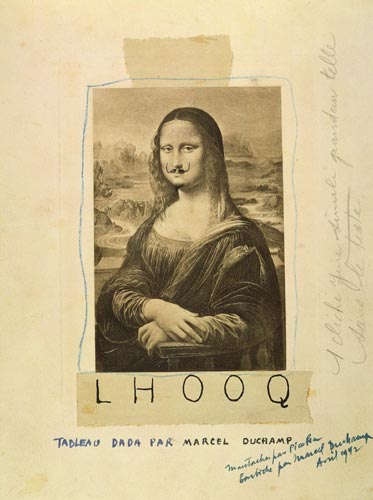
Source: turbosquid.com
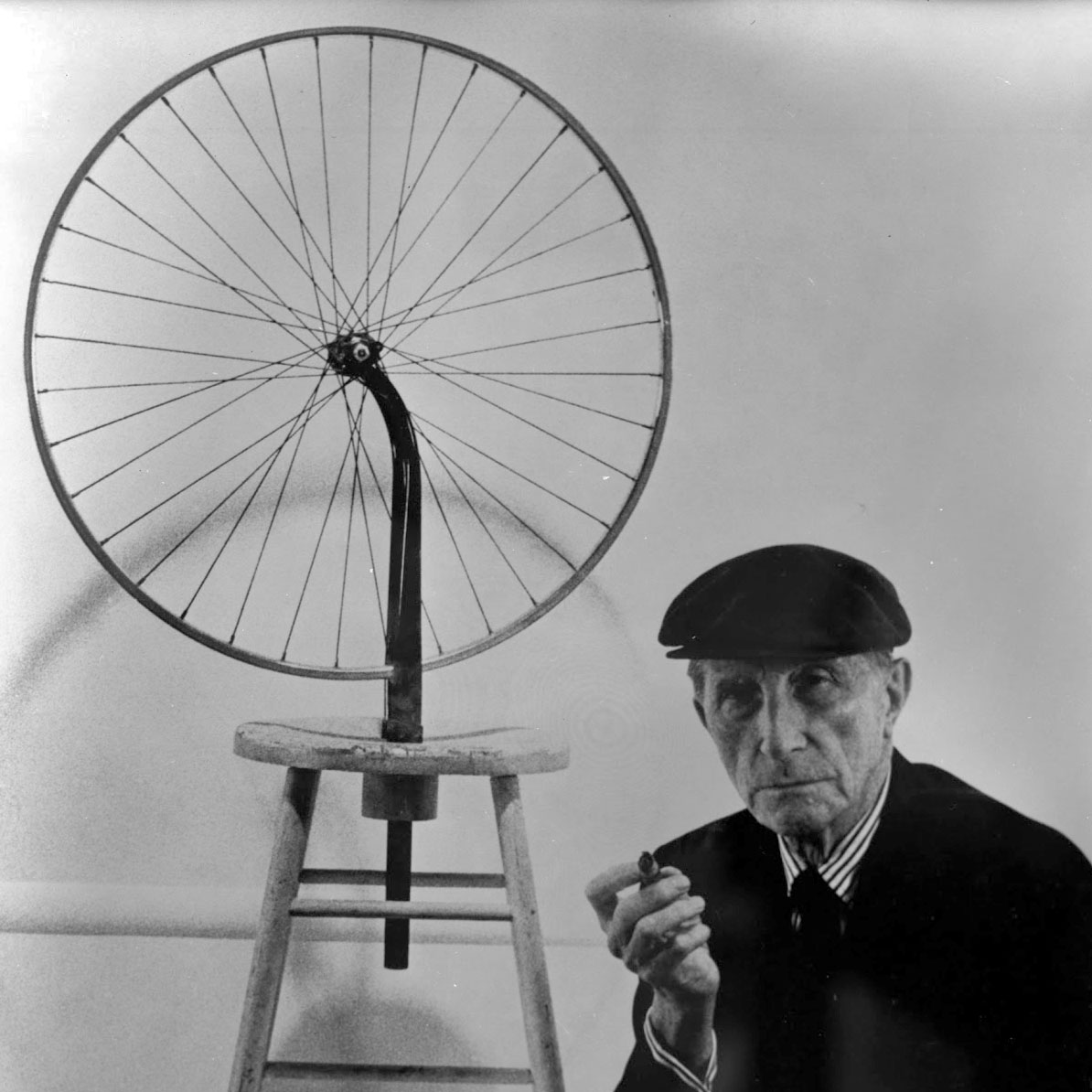
Source: Wikimedia
We interpret objects and events by looking at the context within which they appear or are displayed. This suggests that is possible to create new meaning simply through a process of re-contextualising things.
Innovation as an Act of Reframing
In addition to changing contexts, new meanings can also be created and problems re-defined by shifting cognitive frames. Far from being a mere theoretical curiosity for academics in hidden corners of libraries, this is an exercise that can have enormous practical implications for the defining and creating of economic value. It also offers the potential to change the lives of millions of individuals through the creation of hitherto unimagined and unimaginable products and services. If we master the ability to do this, we can learn to see opportunities where others see only struggle; enormous growth potential where others see poverty and desperation; better ways of solving problems where others are hopelessly stuck in old ways of thinking.
The great innovation expert Clayton Christensen argues that perhaps the most powerful form of innovation is “market-creating innovation”. In collaboration with colleagues, he has argued cogently that enduring prosperity cannot be derived simply by “fixing” poverty, establishing institutions, building infrastructure, pushing resources or trying to solve existing problems. Without fundamentally rethinking these processes, we will only perpetuate the status quo. Any temporary achievements will eventually fade away sooner or later. If people don’t see the benefits of change, they will abandon the new solution and will return to their current way of living. To recognise situations in which market-creating innovation is possible, we need to “put on new lenses” so as to see the same problems from a fundamentally different perspective. This task is a cognitive one; the shift in perspective happens inside our minds. However, as we start to use this changed perspective to shape reality, what was formerly a purely cognitive exercise becomes an enabling force that offers the prospect of changing the lives of millions for the better.
Christensen writes that market-creating innovation can serve as a foundation and catalyst for fostering sustained economic development. It can ignite the economic engine of a country. He and his co-authors define innovation as “the processes by which an organization transforms labor, capital, materials, and information into products and services of greater value”. They also write: “Note that innovation is not the same thing as invention, which describes the process of creating something entirely new that has never existed before. Innovations are often borrowed, from one country to another and from one firm to another, and then improved upon.”. In other words, successful market-creating innovation attempts often start with something we already have and put that thing into a new context. They often use already existing solutions in an entirely new way to target customers who lack the resources, time or expertise to use mainstream products. We can reframe a particular problem and create new value for different people using the same materials, expertise, capital and ideas. All it takes is a shifting of our perspectives to enable us to see things we could not see previously. Here are two brief examples to illustrate the point.
The Wright brothers used bicycle parts to create the world’s first “flying machine”. In applying the laws of hydrodynamics to aviation, they focused on aspects of flying everyone else seemed to be ignoring at that time. By approaching the problem of mechanical flight from a very different perspective, they were able to make bicycle parts fly. And in doing so, they re-contextualised the bicycle parts in a way that gave them radically new meaning.
Source: cdn-global-hk.hobbyking.com
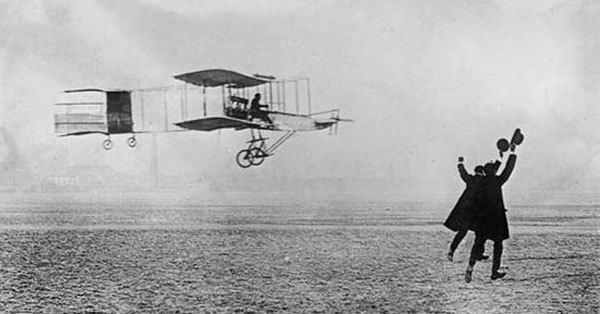
In 1954, Sony introduced the first battery-powered pocket transistor radio. Every part of the radio had existed before. They just figured out how to put these materials together in different ways to create a unique product. The quality of the product was inferior compared to the large vacuum tube radios that most people used at that time. However, they targeted “non-consumption”; mainly young people who couldn’t afford a traditional radio. It was an instant success; the number of radios sold was measured in the hundreds of millions.

Source: retrothing.com
In a way, successful market-creating innovation is often similar to writing a great novel. We already have the language to work with; all the words already exist. We create the masterpiece by organising these existing words in a particular way. By putting words into different contexts, we can create entirely new meanings and say very different things with the same set of words.
KEY TAKEAWAYS
- Humans think in mental models, cognitive frames present in people’s minds. Frames are very hard to develop. Once they are in place, however, it takes tremendous effort to replace them. By definition, frames are meant not to change. People feel an irresistible urge to preserve the status quo. When innovators ignore what people already know, believe, value and expect, they go against our natural mental processes. They will most likely face high levels of resistance, which can make implementing an innovation project extremely difficult.
- We think in analogies, which manifest themselves as metaphors, narratives and stories. We categorise everything, look for familiar patterns. When first trying to understand something, we look at the context in which it appears. This mental shortcut makes it easier and quicker for us to understand the situation. Therefore, when understanding the world around us, context plays a more significant role than the content of the objects perceived.
- The same thing, product, piece of information or phenomenon can have different meanings when looked at it from different perspectives. Therefore, we can create entirely new experiences simply by changing perspective.
- Market-creating innovation is achieved through an act of reframing our “cognitive lenses”. It requires us to put on “new lenses”, to see the same thing from a very different perspective. This way, we can see what others don’t. We can create products and services that no one could have imagined before just by restructuring current existing solutions. By making them more convenient, affordable and widely available, we can optimise our products for use by those who might previously have lacked the time, resources or expertise to make use of such things. In this way, we can develop solutions that change the lives of millions for the better, ultimately creating sustainable prosperity for all.
REFERENCES
The Treachery of Images
- Torczyner, Harry (1977). Magritte: Ideas and Images. p. 71. ISBN 9780810913004.
- Alfred Korzybski’s “A map is not the territory”: Korzybski, Alfred. Science and Sanity: An Introduction to Non-Aristotelian Systems and General Semantics. United States, International Non-Aristotelian Library Publishing Company, 1933.
Mental Models and Frames
- Johnson-Laird, Philip Nicholas. Mental Models (Cognitive Science, No 6). United Kingdom, Harvard University Press, 1986.
- Young, Indi. Mental Models: Aligning Design Strategy with Human Behavior. United States, Rosenfeld Media, 2008.
- Kahneman, Daniel. Thinking, Fast and Slow. Switzerland, Farrar, Straus and Giroux, 2011.
- “The truth will set us free.” —> Lakoff, George. The All New Don’t Think of an Elephant! Know Your Values and Frame the Debate. United Kingdom, Chelsea Green Publishing, 2014.
- Vericourt, Francis de, et al. Framers: Human Advantage in an Age of Technology and Turmoil. United Kingdom, Ebury Publishing, 2021.
- “I’m not a crook”: YouTube
Pepsi and Coca-Cola
- britannica.com
- history.com
- New Coke story: Wikipedia
- Brain scan study: McClure, Samuel M., et al. “Neural correlates of behavioral preference for culturally familiar drinks.” Neuron 44.2 (2004): 379-387.
- The Pepsi-Challenge: YouTube
Metaphors and narratives
- Johnson, Mark, and Lakoff, George. Metaphors We Live By. United States, University of Chicago Press, 2008.
- David, Susan. Emotional Agility: Get Unstuck, Embrace Change and Thrive in Work and Life. United Kingdom, Penguin Books Limited, 2016.
Analogies and Pattern Recognition
- L. Gick and K. J. Holyoak, “Analogical Problem Solving,” Cognitive Psychology 12 (1980): 306–55
- Gentner, Dedre, and Keith J. Holyoak. “Reasoning and learning by analogy: Introduction.” American psychologist 52.1 (1997): 32.
- Holyoak, Keith J. “Analogy and relational reasoning.” (2012).
Memory, Perception and Mental Processes
- Gilbert, Daniel. Stumbling on Happiness. United Kingdom, HarperCollins Publishers, 2009.
- Brost, Michael. “Industrial and Commercial Uses of Artificial Intelligence.”
- neurotray.com
- Eagleman, David. Incognito: The Secret Lives of The Brain. United Kingdom, Canongate Books, 2011.
Illusions
- Ittelson, W. H. (1969). Visual Space Perception, Springer Publishing Company, LOCCCN 60-15818
- Roberts B, Harris MG, Yates TA (2005). “The roles of inducer size and distance in the Ebbinghaus illusion (Titchener circles)”. Perception. 34 (7): 847–56. doi:10.1068/p5273. PMID 16124270.
- Warren, “Perceptual Restoration of Obliterated Sounds,” Psychological Bulletin 96: 3 7I-8 3 ( I984).
- thenakedscientists.com
Wine and Classical Music
- Stories from the great network scientist’s book: Barabási, Albert-László. The Formula: The Universal Laws of Success. United Kingdom, Little, Brown, 2018.
- Hodgson, Robert T. “An analysis of the concordance among 13 US wine competitions.” Journal of Wine Economics 4.1 (2009): 1-9. Link here
- Hodgson, Robert T. “An analysis of the concordance among 13 US wine competitions.” Journal of Wine Economics 4.1 (2009): 1-9. Link here
- theguardian.com
- Tsay, Chia-Jung. “Sight over sound in the judgment of music performance.” Proceedings of the National Academy of Sciences 110.36 (2013): 14580-14585. Link here
- Joshua Bell: classicfm.com; YouTube
Declining Marginal Utility
- Jevons, William Stanley. The Theory of Political Economy. United Kingdom, Palgrave Macmillan, 2013., Originally published: 1871
- Plagnol, Anke, and Corr, Philip. Behavioral Economics: The Basics. United Kingdom, Taylor & Francis, 2018.
Ambiguous words
- muse.dillfrog.com
- “The *eel was on the orange”: R. Warren, “Perceptual Restoration of Obliterated Sounds,” Psychological Bulletin 96: 3 7I-8 3 ( I984).
- Medival history story: Wikipedia; Translation Here
Bottled water
- Salz, Lee B.. Sales Differentiation: 19 Powerful Strategies to Win More Deals at the Prices You Want. United States, AMACOM, 2018.
- businessinsider.com
- Acqua di Cristallo Tributo a Modigliani: moneyinc.com
Lobster
- Wallace, David Foster. 2004. “Consider the Lobster.” Gourmet Magazine, August, 50–64.
- Simler, Kevin, and Hanson, Robin. The Elephant in the Brain: Hidden Motives in Everyday Life. United States, Oxford University Press, 2018.
Duchamp
Market-creating innovation
- Christensen, Clayton M., et al. The Prosperity Paradox: How Innovation Can Lift Nations Out of Poverty. United States, HarperCollins, 2019.
- Duncan, David S., et al. Competing Against Luck: The Story of Innovation and Customer Choice. United States, HarperCollins, 2016.

